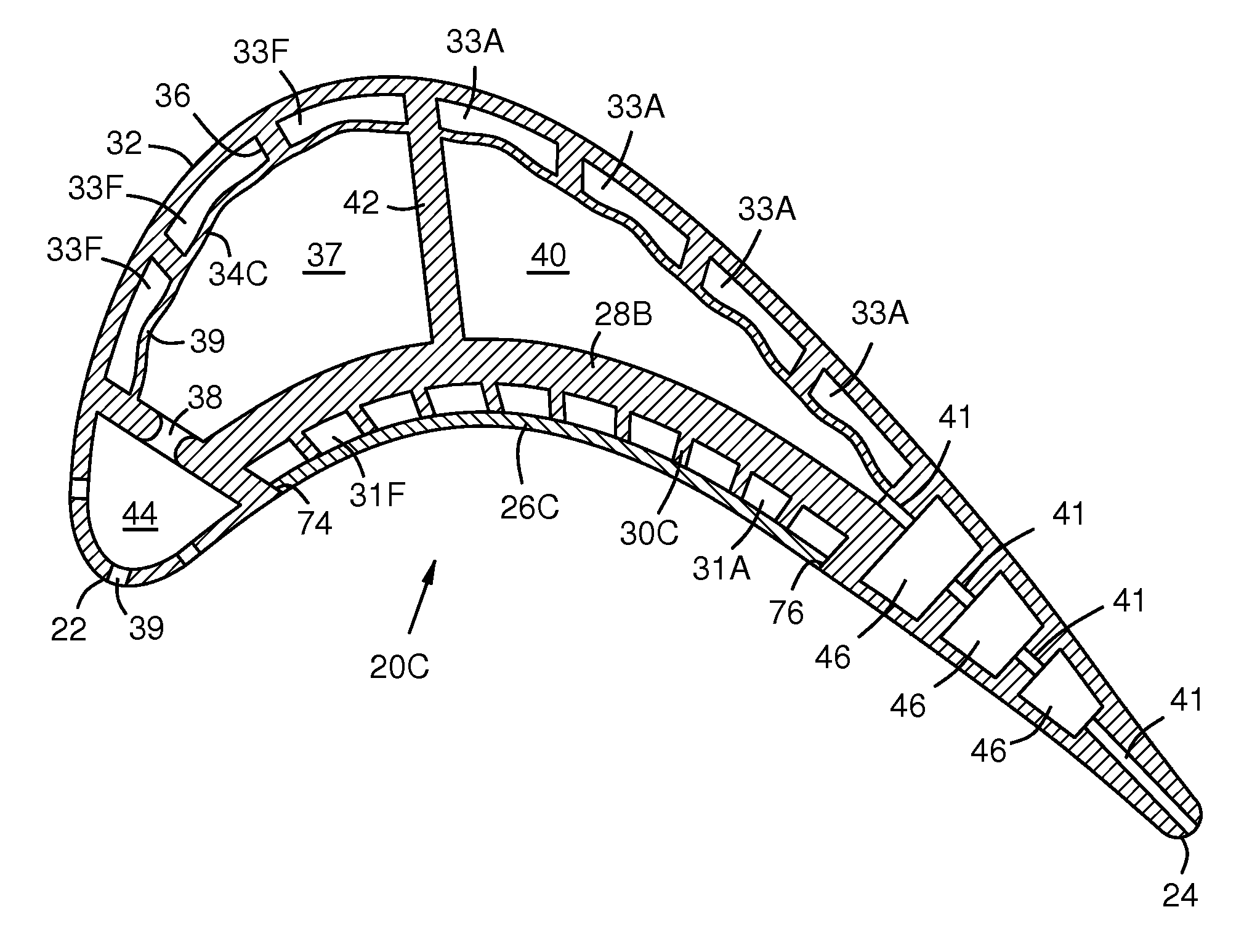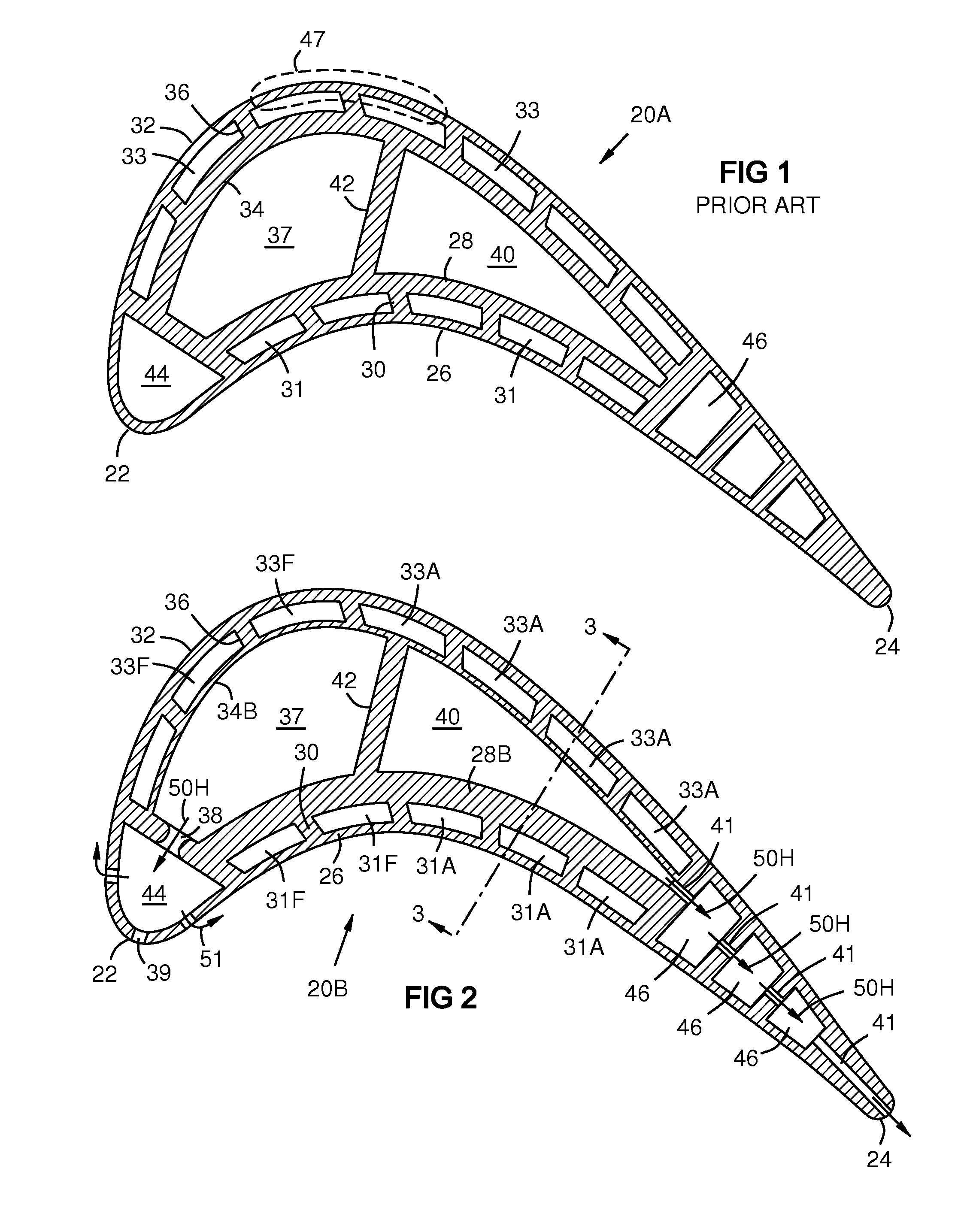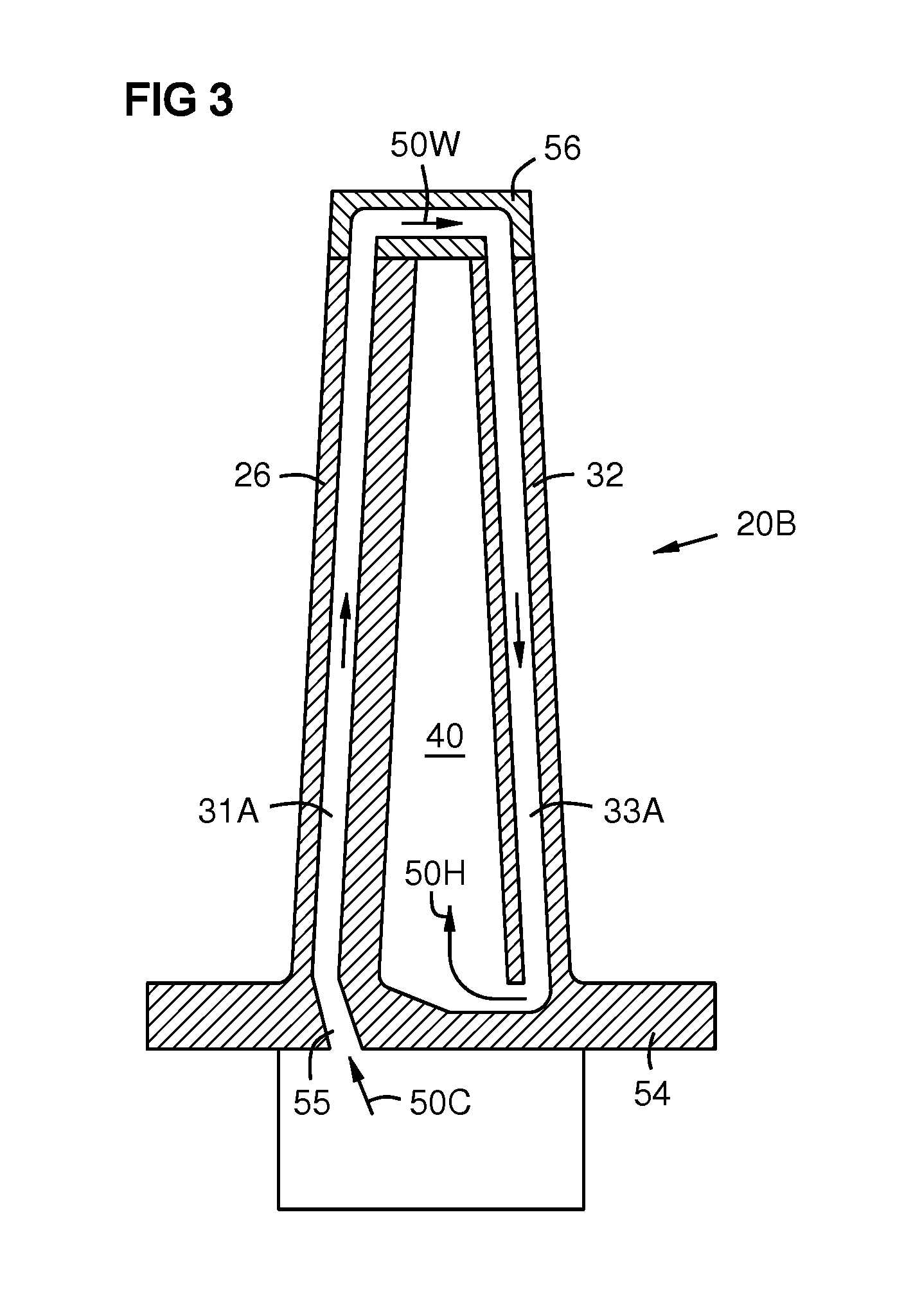Four-Wall Turbine Airfoil with Thermal Strain Control for Reduced Cycle Fatigue
a four-wall turbine and thermal strain control technology, applied in the field of turbine airfoils, can solve problems such as limitations of low cycle fatigue (lcf)
- Summary
- Abstract
- Description
- Claims
- Application Information
AI Technical Summary
Problems solved by technology
Method used
Image
Examples
Embodiment Construction
[0015]The invention reduces and relocates stress on a 4-wall turbine airfoil by controlling the thermal expansion mismatch between the relatively hotter outer walls and the relatively cooler inner walls to reduce low cycle fatigue (LCF) in the airfoil.
[0016]FIG. 1 shows a known construction of a 4-wall airfoil 20A. The purpose of a 4-wall airfoil is to provide near-wall cooling, in which the cooling air flows in channels 31, 33 adjacent to the outer walls 26, 32 of the airfoil. The cooling channels 31, 33 are formed between the double walls 26, 28 and 32, 34. Near-wall cooling is advantageous because the cooling air is in close proximity of the hot outer surfaces of the airfoil, and the resulting heat transfer coefficients are high due to the high flow velocity achieved by restricting the flow through narrow channels.
[0017]The airfoil 20A of FIG. 1 has a leading edge 22, a trailing edge 24, a pressure side outer wall 26, a pressure side inner wall 28, pressure side ribs 30, pressure...
PUM
 Login to View More
Login to View More Abstract
Description
Claims
Application Information
 Login to View More
Login to View More - R&D
- Intellectual Property
- Life Sciences
- Materials
- Tech Scout
- Unparalleled Data Quality
- Higher Quality Content
- 60% Fewer Hallucinations
Browse by: Latest US Patents, China's latest patents, Technical Efficacy Thesaurus, Application Domain, Technology Topic, Popular Technical Reports.
© 2025 PatSnap. All rights reserved.Legal|Privacy policy|Modern Slavery Act Transparency Statement|Sitemap|About US| Contact US: help@patsnap.com



